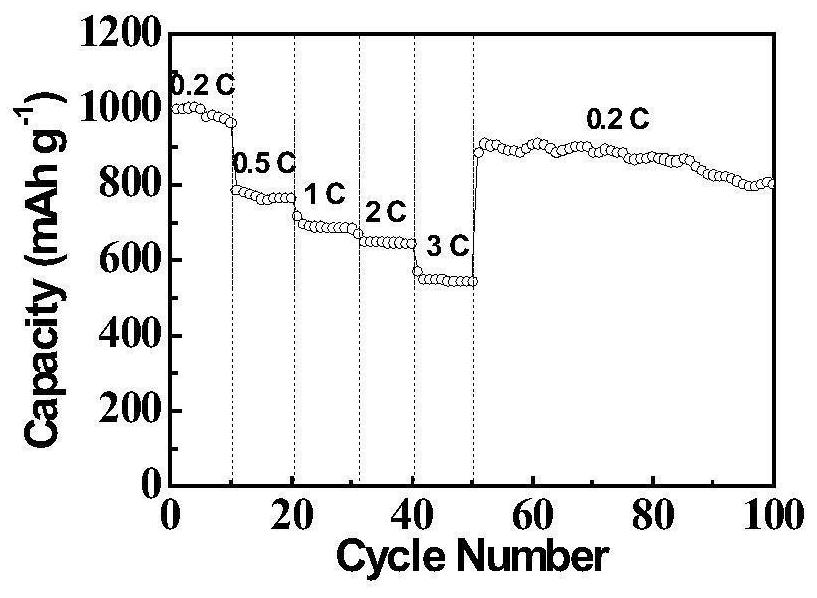Nano material applied to positive electrode of lithium-sulfur battery and preparation method of nano material
A technology of nanomaterials and lithium-sulfur batteries, applied in nanotechnology for materials and surface science, battery electrodes, lithium batteries, etc., can solve the problem of poor cycle life of lithium-sulfur batteries, unsatisfactory effects, sulfur volume expansion, etc. problems, to achieve the effect of improving electrochemical performance, inhibiting the shuttle effect, and small particle size
- Summary
- Abstract
- Description
- Claims
- Application Information
AI Technical Summary
Problems solved by technology
Method used
Image
Examples
Embodiment 1
[0018] The nano-material applied to the positive electrode of the lithium-sulfur battery is aluminum / gallium nitride nano-particles. The particle size of the nanoparticles is less than 10nm.
[0019] The preparation method of the nanomaterial is characterized in that it comprises the following steps:
[0020] (1) Preparation of mesoporous graphitized carbon nitride: first in 1gCH 2 N 2 2.5 g of an aqueous solution of silica nanoparticles with a mass fraction of 40% was added to the mixture, and then heated to 90° C. under vigorous stirring to ensure the slow evaporation of water. After the water is evaporated, a white solid is obtained, which is placed in a closed ceramic crucible and heated to 550°C, and kept for 4 hours; finally, the concentration of 4mol / L NH 4 HF 2 Solution removal of silica nanoparticles yields mesoporous graphitized carbon nitride (mpg-C 3 N 4 );
[0021] (2) Preparation of ternary metal nitride nanoparticles Al-Ga-N: First, 2.0 g of ethanol is us...
Embodiment 2
[0023] The nanomaterial applied to the positive electrode of lithium-sulfur battery is titanium / vanadium nitride nanoparticle. The particle size of the nanoparticles is less than 10nm.
[0024] The preparation method of described nanometer material, comprises the following steps:
[0025] (1) Preparation of mesoporous graphitized carbon nitride: first in 1gCH 2 N 2 2.5 g of an aqueous solution of silica nanoparticles with a mass fraction of 40% was added to the mixture, and then heated to 90° C. under vigorous stirring to ensure the slow evaporation of water. After the water is evaporated, a white solid is obtained, which is placed in a closed ceramic crucible and heated to 550°C, and kept for 4 hours; finally, the concentration of 4mol / L NH 4 HF 2 Solution removal of silica nanoparticles yields mesoporous graphitized carbon nitride (mpg-C 3 N 4 );
[0026] (2) Preparation of ternary metal nitride nanoparticles Ti-V-N: First, 2.0 g of ethanol was used to dissolve the me...
PUM
| Property | Measurement | Unit |
|---|---|---|
| particle diameter | aaaaa | aaaaa |
Abstract
Description
Claims
Application Information
 Login to View More
Login to View More - R&D
- Intellectual Property
- Life Sciences
- Materials
- Tech Scout
- Unparalleled Data Quality
- Higher Quality Content
- 60% Fewer Hallucinations
Browse by: Latest US Patents, China's latest patents, Technical Efficacy Thesaurus, Application Domain, Technology Topic, Popular Technical Reports.
© 2025 PatSnap. All rights reserved.Legal|Privacy policy|Modern Slavery Act Transparency Statement|Sitemap|About US| Contact US: help@patsnap.com


